
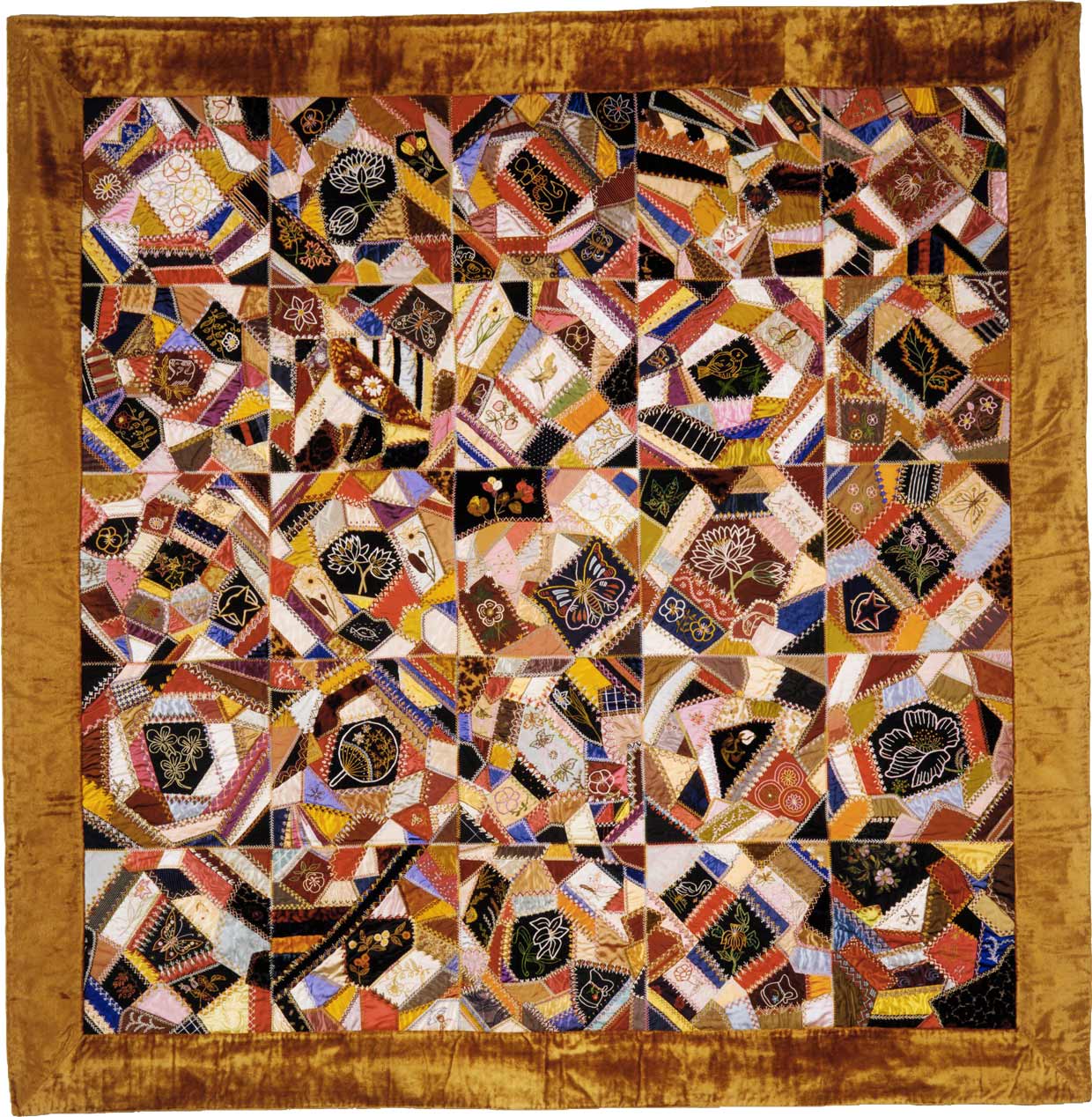
It looked as if somebody had shattered two-thousand rainbows and heaped the fragments into two thousand different mounds of rich and wonderful color.
So there I am, trawling through the Met’s digital collections for suitable imagery to use in an article about web design, and what do I find but a “crazy quilt.”
These quilts are crazy! Quilts! It’s shocking to see such a radical aesthetic grafted onto a staid and traditional form.


Crazy quilts were made by urban, upper-class, and fashionable women.
Some sources suggest that they have their genesis in the Japanese pavilion at the 1876 Philadelphia Centennial Exposition which introduced “crazed” ceramics to America.
Others hypothesize that the fad drew on a nostalgia for the patchwork scrap quilts of a rural America that was rapidly disappearing: nostalgia for an aesthetics borne of practicality transformed, by fashion and excess, into practicality's opposite. Harper’s Bazzar claimed a full-size crazy quilt took 1,500 hours to complete.
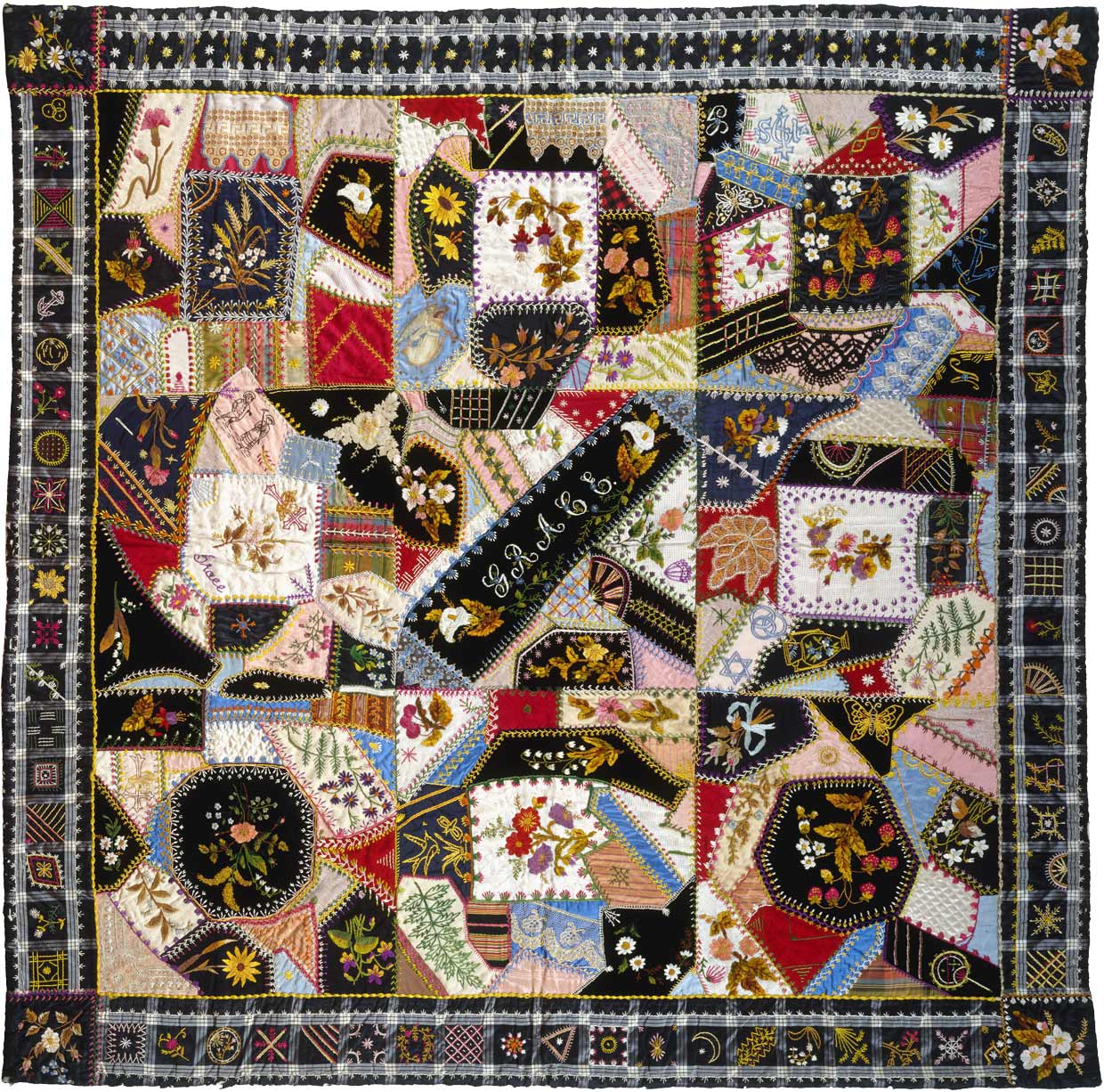
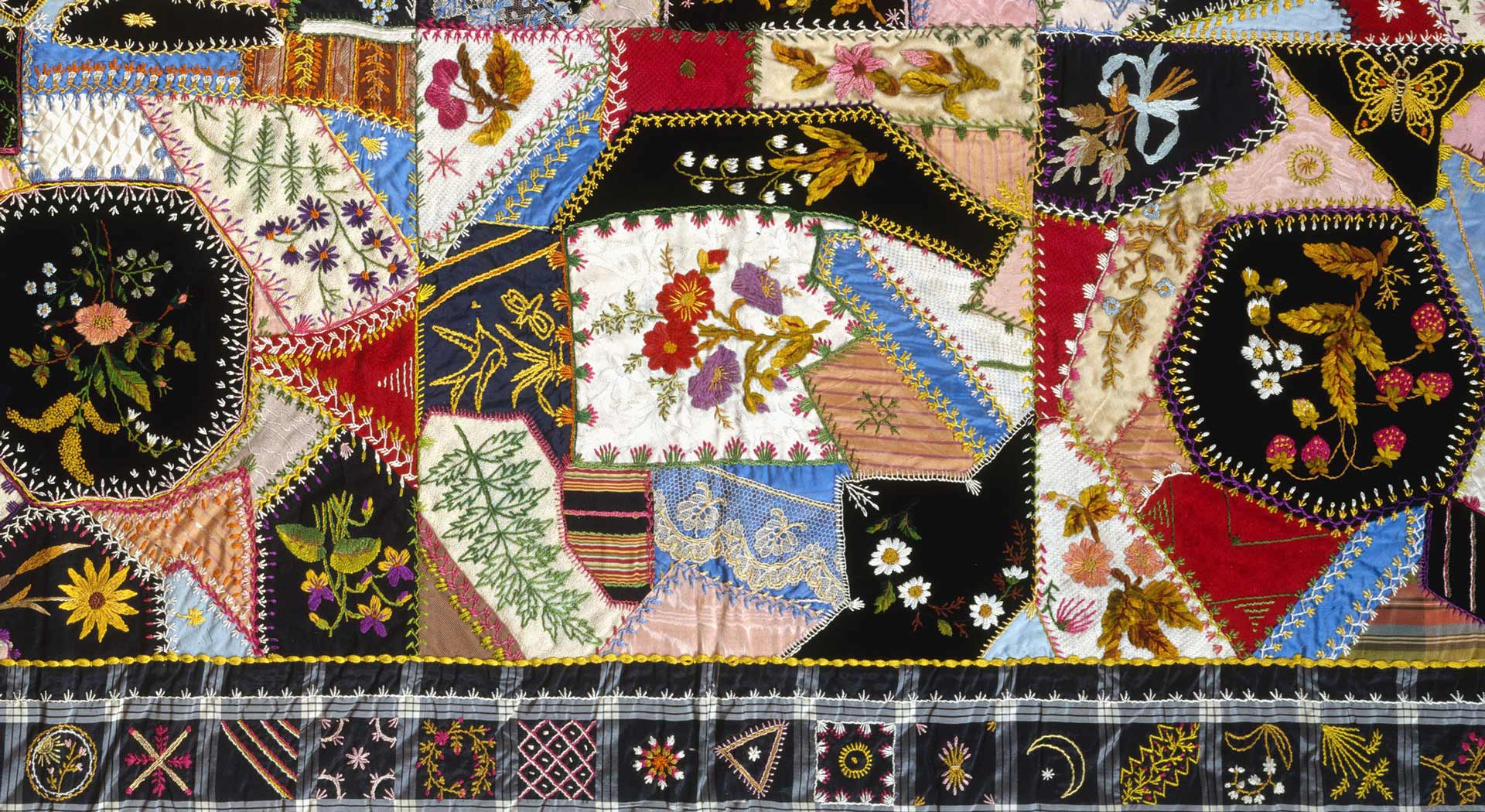
Much of that time was spent on exotic stitchings and painstaking embroidery: filling every nook and cranny with images of nature, the orient, and fantasy. The International Quilt Study Center ties the crazy quilt fad to a broader cultural romance for magical, innocent “fairylands”.
Born out of a fascination with foreign lands, nature, a disappearing past and pure fantasy, these quilts seem to express a yearning for something else; a way to escape the quilters’ regimented, urban, upper-class realities.
In that way, they don’t seem all that far removed from today’s Brooklyn-based tumblrs full of radical wolves, washed-out sunsets, magical crystals, and questionable headdresses.
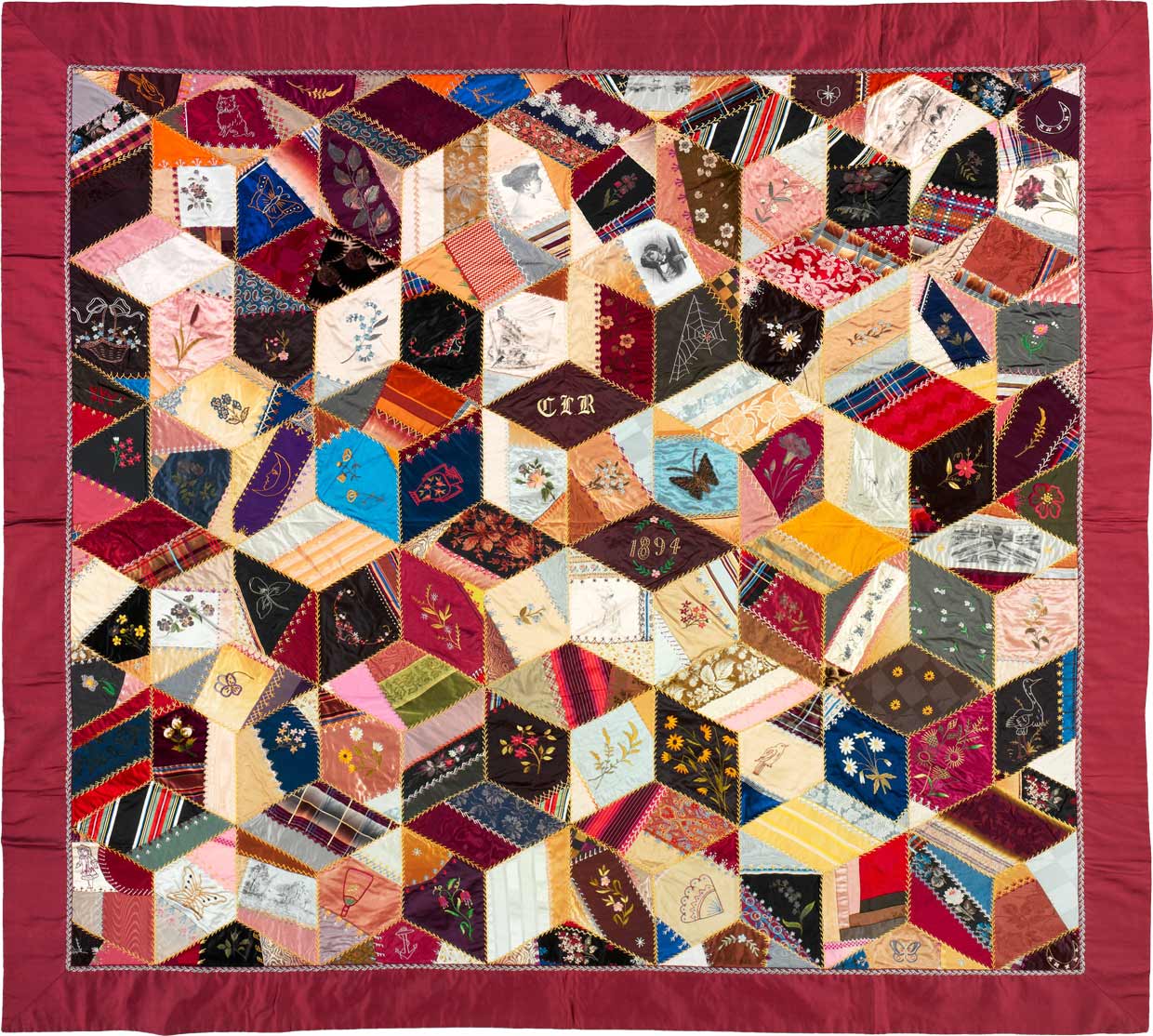

Materially, crazy quilts were entirely tied to their time and place. An industrial, globalized United States provided urban quilters with varieties of fabric and thread unavailable to their ancestors or rural contemporaries. Crazy quilts are a riot of shiny silks, velvets, and satins.


Commentators of the day either gushed at the quilts’ maximalist novelty or tossed the fad aside as exactly the sort of impractical madness which the name “crazy quilt” implies. All remarked at the speed and intensity with which the fashion took hold. Their sexism is startling!
Oh, the Crazy-quilt mania triumphantly raves,
And maid, wife, and widow are bound as its slaves.And where is the wife who so vauntingly swore
That nothing on earth her affections could smother?
She crept from your side at the chiming of four
And is down in the parlor at work on another.And thus it has been since the panic began,
In many loved homes it has wrought desolation,
And cursed is the power by many a man,
That has brought him so close to the verge of starvation,But make it she must,
She will do it or bust,Beg, swap, and buy pieces or get them on trust,
Oh, the Crazy-quilt mania, may it soon cease to rave
In the land of the free and the home of the brave.
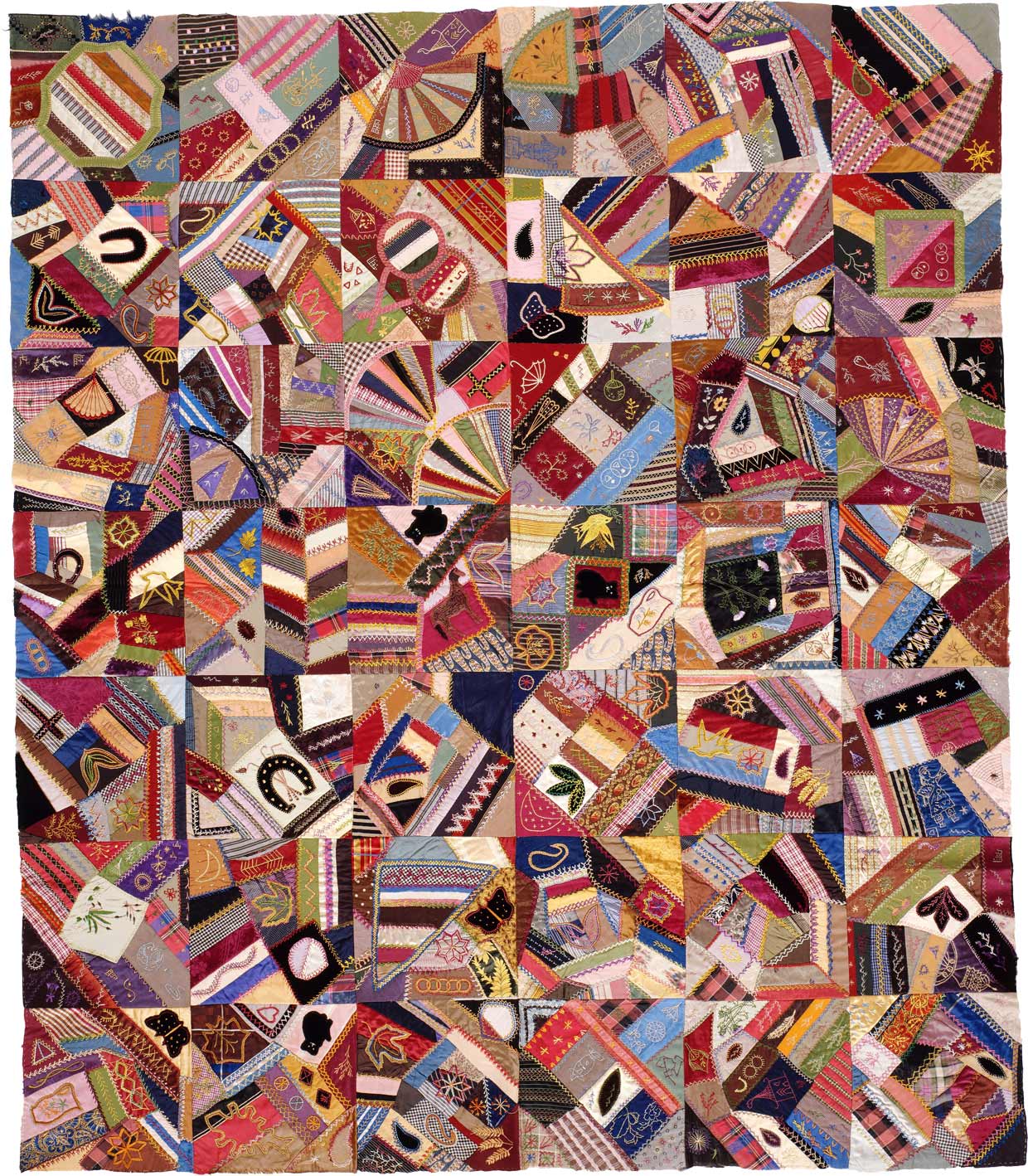
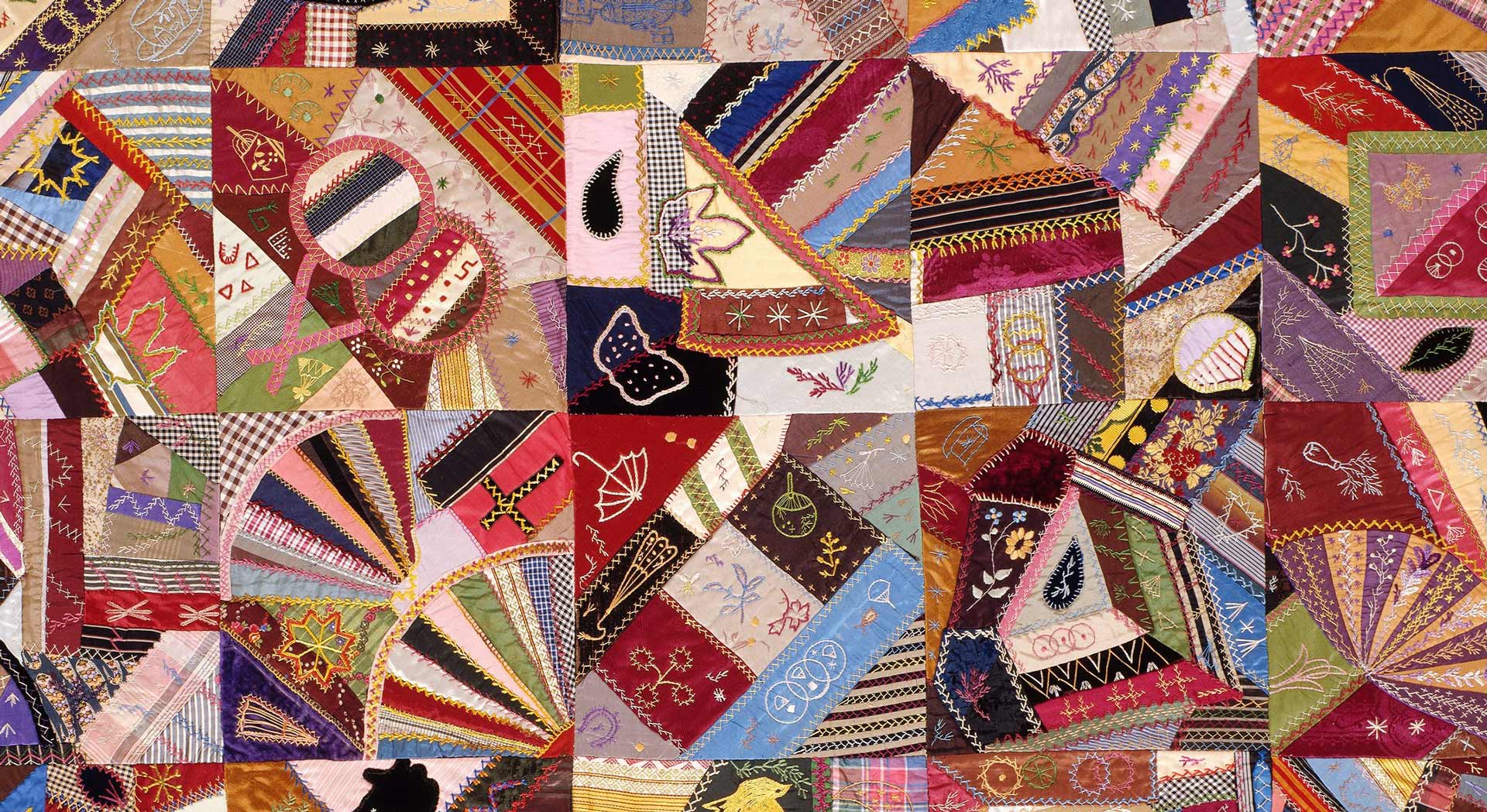
One can draw a line from these quilts straight through to contemporary kitsch; simultaneously, they look a lot more like what was to come in the high art world than what came before. While the men of the day who called themselves artists were busy recapitulating European battles over what was beautiful, the ransom note opulence of these quilts – women’s work – still surprises a hundred and thirty years later. Crazy quilts capture something fundamental about the sensually overwhelming, fractured pistache of urban, industrial, globalized life. Score a point for women, popular fashion, and traditional craft.